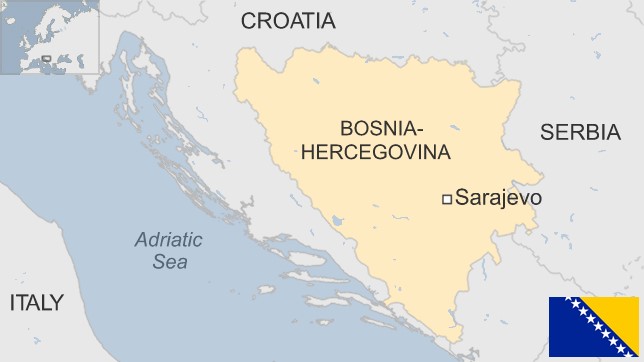Nestled in the heart of the Balkans, Bosnia and Herzegovina is a country brimming with captivating history, picturesque landscapes, and a vibrant cultural tapestry. From its ancient cities and architectural wonders to its stunning mountains and pristine rivers, this Southeast European gem offers an unforgettable experience for travelers seeking adventure and cultural immersion. In this article, we delve into the multifaceted beauty of Bosnia and Herzegovina, drawing upon authentic sources to provide you with an in-depth perspective on this remarkable destination.
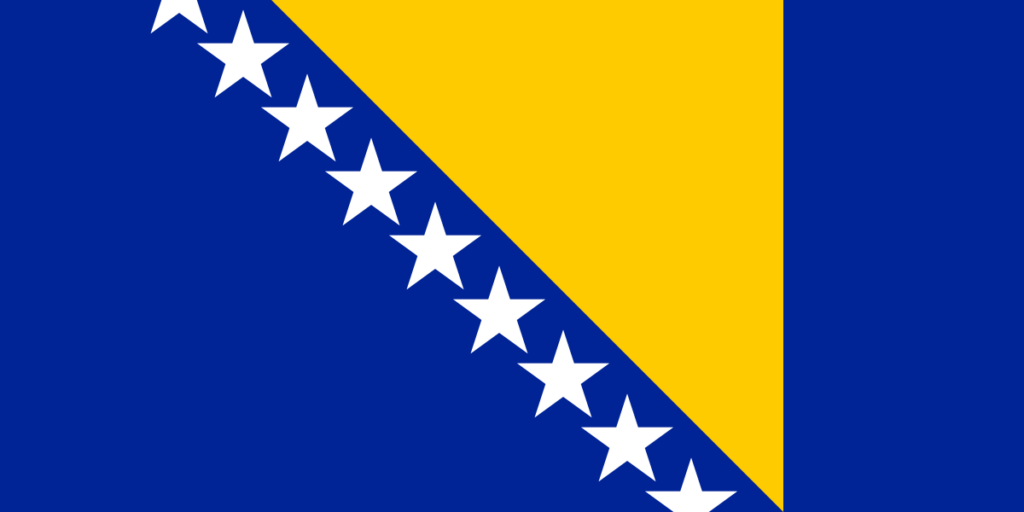
Table of Contents
1. Historical Significance: A Melting Pot of Cultures
Bosnia and Herzegovina, located in the heart of the Balkans, has a rich history as a melting pot of cultures. This region has been a crossroads for various civilizations throughout the centuries, resulting in a diverse and fascinating cultural heritage.
The historical significance of Bosnia and Herzegovina as a melting pot can be traced back to ancient times when Illyrian tribes inhabited the land. Later, the Romans conquered the area and left their mark through architecture and infrastructure.
During the medieval period, Bosnia became a powerful kingdom under the Bosnian Banate, adopting Christianity. However, in the 15th century, the Ottoman Empire conquered the region, bringing Islam to the forefront. They blended Islamic and Christian traditions during this period, influencing architecture, art, and societal customs.
The Austro-Hungarian Empire’s rule in the late 19th and early 20th centuries added another layer of cultural influence, introducing Western education, administration, and infrastructure.
The diversity of religious backgrounds in Bosnia and Herzegovina is one of the most striking aspects of its melting pot. Today, the country consists of a mix of Muslims, Serbs, and Croats, each with unique cultural practices, traditions, and languages.
This cultural fusion is evident in the architecture of Bosnia and Herzegovina’s cities. Sarajevo, the capital, is a prime example, with its mix of Ottoman, Austro-Hungarian, and contemporary styles blending harmoniously. Mosques, synagogues, and churches coexist, showcasing the country’s religious tolerance and diversity.
The melting pot of cultures is also reflected in the cuisine of Bosnia and Herzegovina, which combines various influences to create a delectable array of dishes. From traditional Balkan cevapi and burek to Ottoman-inspired baklava and Turkish coffee, the food represents a fusion of different culinary traditions.
Moreover, the region’s music, dance, and festivals exhibit a colorful amalgamation of customs, reflecting the harmonious coexistence of different communities.
Despite its cultural richness, Bosnia and Herzegovina has faced challenges related to ethnic and religious tensions, particularly during the Bosnian War in the 1990s. However, the country’s diverse heritage remains a vital aspect of its identity and a testament to the resilience and spirit of its people.
In conclusion, the historical significance of Bosnia and Herzegovina as a melting pot of cultures lies in its ability to preserve and celebrate its diverse heritage, demonstrating that unity can be found amidst a tapestry of traditions and backgrounds. This cultural richness continues to shape the nation’s identity and serves as a reminder of the importance of embracing diversity and coexistence.
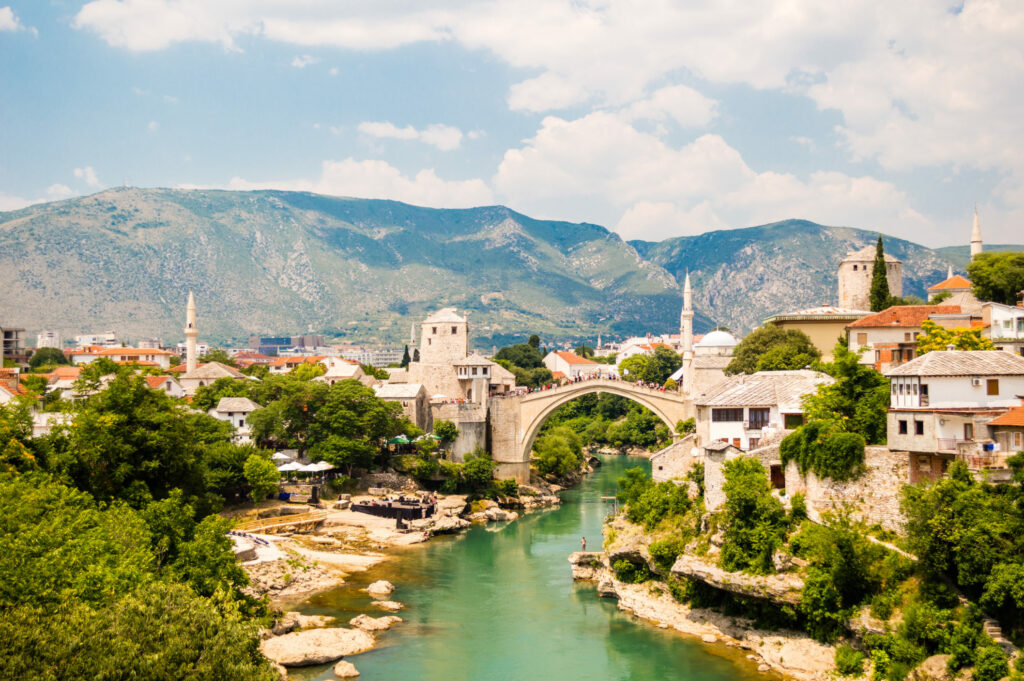
2. Sarajevo: A Window into the Past
Sarajevo, the capital city of Bosnia and Herzegovina, is a captivating blend of history, culture, and resilience. Nestled in a picturesque valley, the town has a rich and turbulent past that reflects the complex tapestry of the Balkans.
The roots of Sarajevo can be traced back to the Roman period, but it truly flourished during the Ottoman Empire’s rule in the 15th century. As an important trade hub, the city became a melting pot of various ethnic and religious groups, including Bosniaks, Serbs, Croats, Jews, and Roma, leading to a diverse and multicultural society.
Sarajevo’s significance in history was amplified during the 20th century, particularly during World War I. In this city, the assassination of Archduke Franz Ferdinand of Austria took place in 1914, triggering a series of events that led to the outbreak of the war. The assassination site, the Latin Bridge, still stands as a solemn reminder of this pivotal moment in history.
The 1990s brought a dark period for Sarajevo and the entire region as Bosnia and Herzegovina descended into a devastating war. The city endured a 44-month-long siege, one of the longest in modern history, during which it faced immense hardships and destruction. The scars of the conflict are still visible in the bullet-riddled buildings and the “Sarajevo Roses,” red resin-filled craters marking the sites of fatal mortar explosions.
Despite the challenges and traumas, Sarajevo has shown remarkable resilience in rebuilding and healing. The city’s diverse heritage is evident in its architecture, with mosques, churches, synagogues, and historical buildings coexisting. The cobbled streets of the Baščaršija, the city’s old bazaar, evoke a sense of the past, offering a glimpse into the vibrant life of the Ottoman era.
Sarajevo also boasts a vibrant cultural scene. The Sarajevo Film Festival, established in 1995 during the war, has become one of the region’s most prestigious film events. The city’s music, arts, and literature festivals showcase the creativity and talent of its inhabitants.
Moreover, Bosnian cuisine reflects the city’s diverse heritage, with dishes like cevapi, burek, and baklava enticing visitors and locals alike.
In recent years, Sarajevo has become a popular destination for travelers seeking history, culture, and a deeper understanding of the complexities of the Balkans. Its museums, like the Sarajevo Tunnel Museum, provide insights into the city’s wartime experiences, while its warm and welcoming people offer a testament to the human spirit’s endurance.
Sarajevo stands as a poignant window into the past of Bosnia and Herzegovina, a city that has faced immense challenges yet remains a living example of resilience, coexistence, and the enduring spirit of its people.
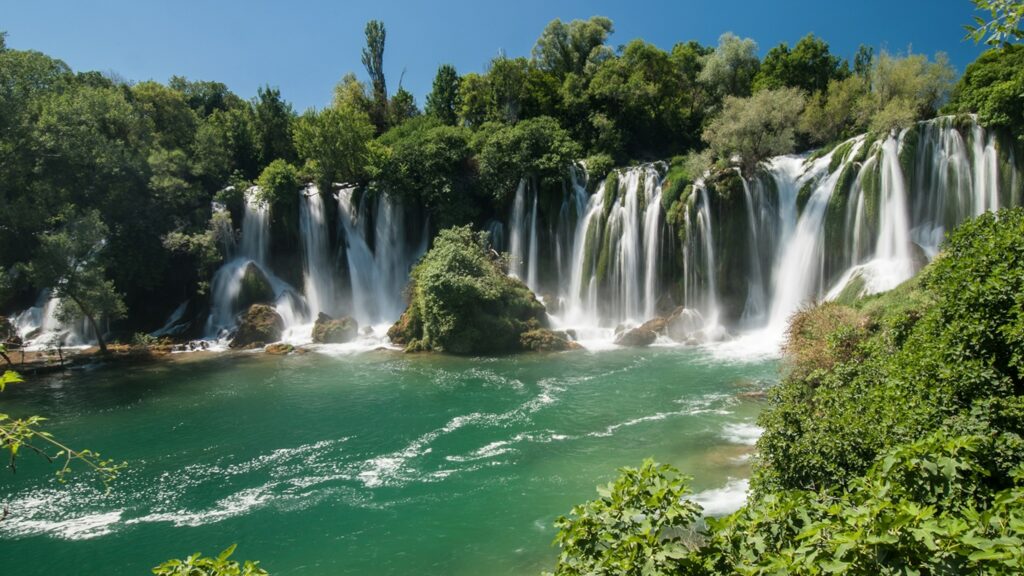
3. Mostar’s Iconic Stari Most Bridge
The Stari Most, which translates to “Old Bridge,” is an iconic architectural marvel in Mostar, Bosnia and Herzegovina. It is one of the country’s most significant landmarks and holds immense historical and cultural importance. The bridge stands as a symbol of unity, resilience, and the enduring spirit of the people of Mostar.
The Stari Most was initially constructed in 1566 during the Ottoman period by the architect Mimar Hayruddin. It connected the two sides of the Neretva River, uniting the Muslim-dominated eastern part of Mostar with the Christian and Jewish communities on the western side.
The bridge’s design is a testament to the exceptional engineering skills of the Ottoman era. It features a single, elegant stone arch that spans 28 meters (92 feet) across the river and reaches a height of 24 meters (79 feet) above the water’s surface. The stone blocks used in the construction were meticulously arranged without mortar, giving the bridge its unique and striking appearance.
The Stari Most was a vital trade route for centuries and a crucial link between different communities. However, the bridge faced significant challenges throughout its history. During the Bosnian War in the 1990s, Mostar became a battleground, and the Stari Most bore the brunt. In November 1993, artillery fire tragically destroyed the bridge, leaving a void in the hearts of the locals and the world.
After the War, the reconstruction of the Stari Most became a symbol of reconciliation and healing for the people of Mostar. With support from various international organizations, the bridge was rebuilt using the original techniques and stones retrieved from the riverbed. The reconstruction was completed in 2004, and the bridge was reopened to the public, serving as a poignant reminder of the importance of preserving cultural heritage and promoting unity.
Today, the Stari Most remains a prominent attraction, drawing tourists from around the globe to marvel at its stunning architecture and learn about its profound historical significance. The bridge symbolizes Mostar’s rich past but is also a testament to the resilience and strength of its people in overcoming adversity.
Stari Most is inscribed on the UNESCO World Heritage List and continues to stand as a powerful symbol of unity, bridging the gaps of history and connecting the diverse communities of Mostar in Bosnia and Herzegovina.
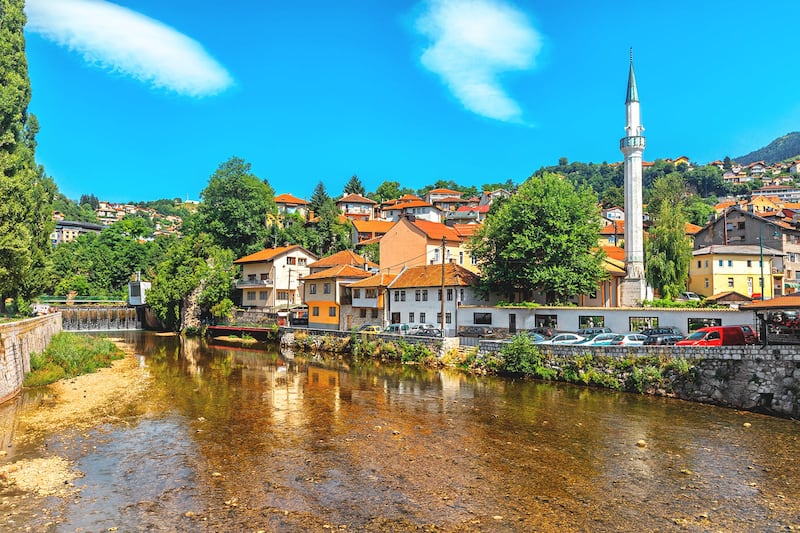
4. Untamed Natural Beauty: Plitvice Lakes and Una National Parks
Nestled within the picturesque landscapes of Bosnia and Herzegovina, Plitvice Lakes and Una National Parks stand as stunning examples of untamed natural beauty. These two national parks showcase the country’s rich biodiversity, pristine waters, and lush greenery, making them must-visit destinations for nature enthusiasts and travelers seeking serenity.
- Plitvice Lakes National Park:
Located in the northern region of Bosnia and Herzegovina, Plitvice Lakes National Park is a UNESCO World Heritage site and one of Europe’s most captivating natural wonders. The park is renowned for its interconnected series of 16 terraced lakes, cascading into each other through a network of waterfalls and travertine barriers. The crystal-clear turquoise waters are home to abundant aquatic life, making it a dream destination for photographers and nature lovers.
Hiking trails and wooden walkways wind through the park, providing visitors with awe-inspiring views of the lakes, lush forests, and wildlife. Rare species such as lynxes, bears, and wolves find refuge within the park’s protected boundaries, adding to its allure as an unspoiled wilderness.
- Una National Park:
Situated northwest of Bosnia and Herzegovina, Una National Park is named after the magnificent Una River that flows through it. The park boasts pristine landscapes, diverse ecosystems, and a unique Mediterranean and Alpine influences blend. With its emerald green waters, the Una River meanders through the park, creating enchanting waterfalls and rapids that enthrall visitors.
Una National Park is a sanctuary for various plant and animal species, some endangered or rare, including the Eurasian otter and the Balkan lynx. Exploring the park’s trails and riverbanks offers thrilling adventures, such as rafting, kayaking, and trekking, making it an ideal destination for adrenaline seekers and outdoor enthusiasts.
Both Plitvice Lakes and Una National Parks provide a tranquil escape from the hustle and bustle of modern life, inviting visitors to immerse themselves in the wonders of untouched nature. These protected areas testify to Bosnia and Herzegovina’s commitment to preserving its natural heritage and offer a reminder of the importance of safeguarding these ecological treasures for future generations. These untamed gems are the perfect choice for travelers seeking a harmonious blend of untouched landscapes and environmental diversity.
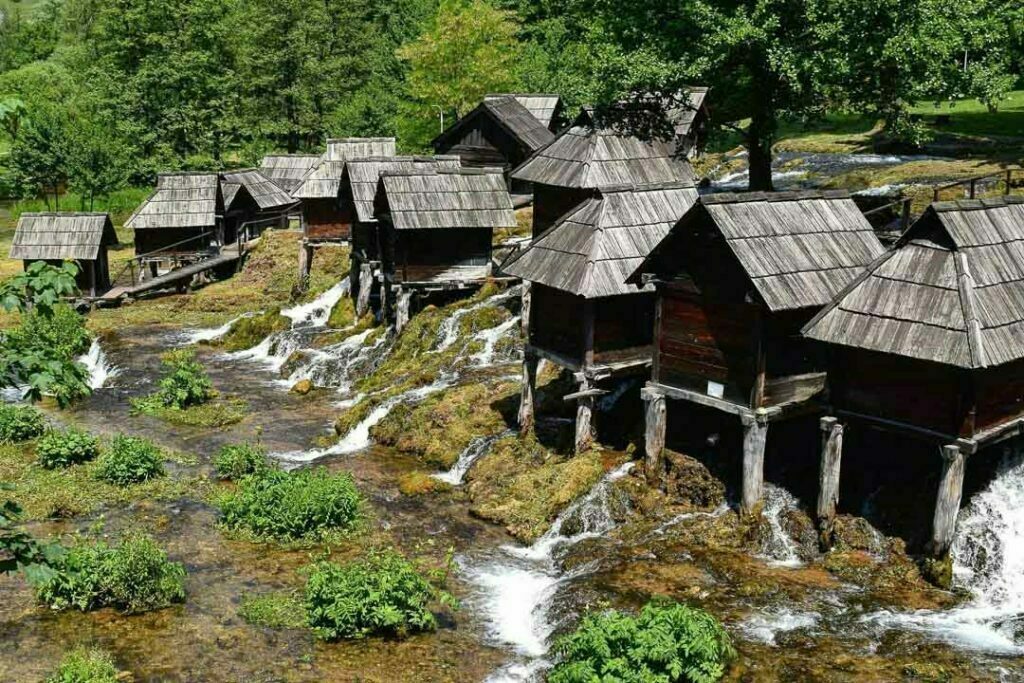
5. Herzegovina’s Hidden Gems: Blagaj and Počitelj
Nestled in the heart of Bosnia and Herzegovina, the region of Herzegovina is home to two hidden gems that boast a rich history, stunning architecture, and picturesque landscapes: Blagaj and Počitelj.
Blagaj, located just a short distance from the city of Mostar, is a charming village that centers around the striking Blagaj Tekija. This unique Dervish monastery is perched at the base of a cliff next to the stunning Buna River Spring. The Tekija’s exquisite Ottoman architecture dates back to the 16th century and offers visitors a glimpse into the region’s cultural and religious heritage. With its emerald green waters and lush surroundings, the Buna River Spring creates a serene and peaceful ambiance, making it a popular spot for visitors seeking tranquility and natural beauty.
Počitelj, another historical gem, is a medieval town on a hill overlooking the Neretva River. This fortified town showcased a blend of Ottoman and Mediterranean architectural styles and was once a strategic stronghold during the Ottoman period. The most prominent feature of Počitelj is the impressive Halebija Tower, which offers panoramic views of the town and the surrounding countryside. Visitors can immerse themselves in the town’s storied past through the narrow streets and stone houses, discovering ancient mosques, charming cafes, and traditional artisan workshops.
Blagaj and Počitelj are recognized as UNESCO World Heritage sites, providing a unique glimpse into Bosnia and Herzegovina’s fascinating history and cultural diversity. As relatively lesser-known destinations, they offer a more authentic and tranquil experience than the bustling tourist hubs. Travelers seeking a deeper connection with the country’s heritage and natural beauty will find these hidden gems of Herzegovina captivating and unforgettable.
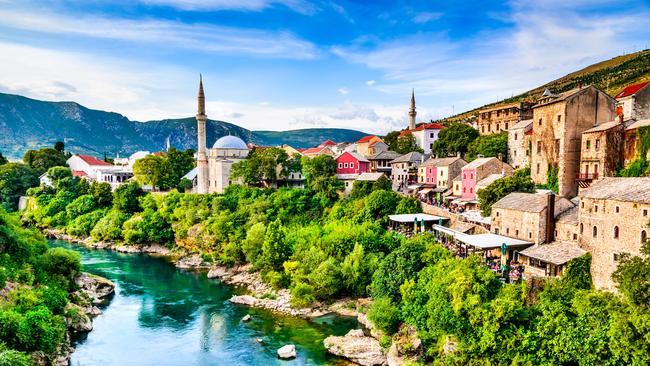
6. Trebinje: A Serene Haven
Escape the crowds and indulge in tranquility in Trebinje. This charming city boasts a laid-back atmosphere, scenic vineyards, and the iconic Arslanagić Bridge, offering a glimpse into rural life and an opportunity to savor the region’s finest wines.
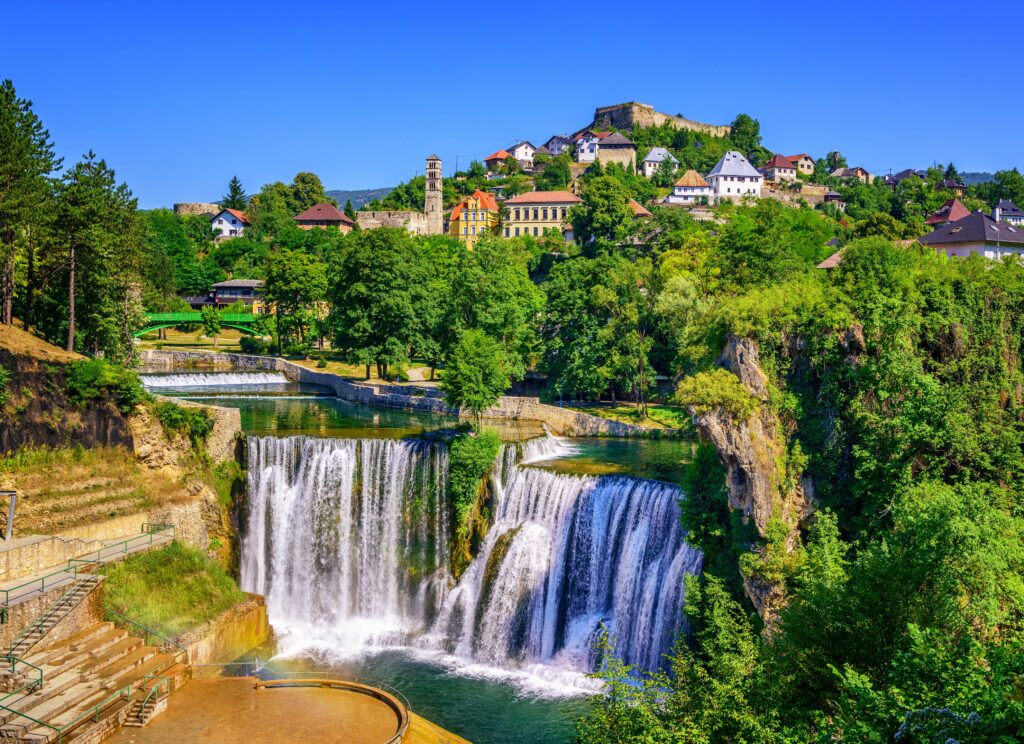
7. Rafting Adventures: Tara River Canyon
The Tara River Canyon in Bosnia and Herzegovina offers an exhilarating and unforgettable rafting adventure for thrill-seekers and nature enthusiasts alike. Known as the “Tear of Europe,” the Tara River is one of the longest and deepest canyons in the world, and it has been designated as a UNESCO World Heritage Site due to its outstanding natural beauty.
Rafting through the Tara River Canyon provides a unique opportunity to experience the breathtaking landscapes of the Dinaric Alps region. The crystal-clear waters of the river wind through the steep limestone cliffs, create a dramatic and picturesque setting that will leave visitors in awe. The lush forests that cling to the canyon walls add to the allure, making it a paradise for outdoor lovers.
The rafting experience in the Tara River Canyon is diverse, catering to both beginners and experienced rafters. Depending on the time of the year and the water level, different sections of the river offer varying levels of difficulty, from gentle floats to challenging rapids, making it accessible for everyone.
As you paddle downstream, you will be surrounded by the tranquility of nature, interrupted only by the thrilling rush of navigating through the rapids. The adventure brings opportunities to spot various wildlife species, such as eagles, otters, and even wild horses, adding extra wonder to the journey.
Experienced guides will lead the rafting excursion, ensuring safety and providing exciting insights into the region’s history and ecology. Many tour operators offer day trips or multi-day expeditions, providing an opportunity to camp under the stars, truly immersing oneself in the untamed beauty of the canyon.
Aside from rafting, visitors can also indulge in other outdoor activities like hiking, canyoning, and zip-lining, making it an ideal destination for a well-rounded adventure experience.
For nature enthusiasts and adventure seekers alike, a rafting adventure in the Tara River Canyon of Bosnia and Herzegovina promises an unforgettable journey filled with breathtaking scenery, adrenaline-pumping rapids, and a deep connection with one of Europe’s most remarkable natural wonders.
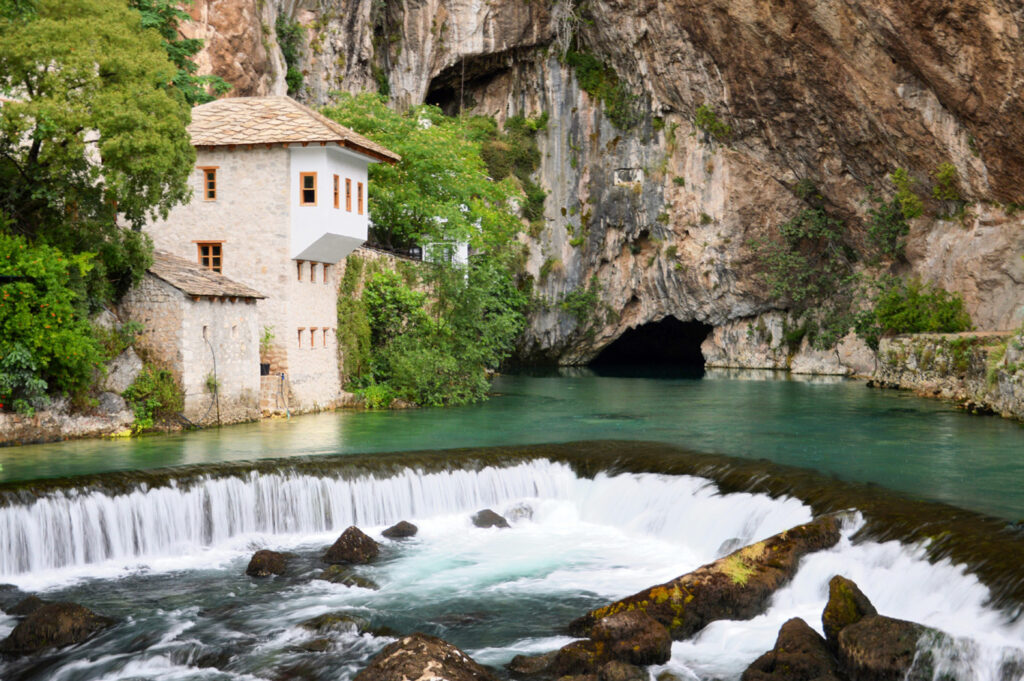
8. Culinary Delights: Taste the Flavors of Bosnia and Herzegovina
Bosnia and Herzegovina, located in the heart of the Balkans, offers a delightful culinary experience that reflects its diverse cultural influences. With a rich history and a blend of Ottoman, Austro-Hungarian, and Balkan traditions, the country’s cuisine presents a wide range of flavors that will tantalize any food lover’s taste buds.
One of the most iconic dishes from Bosnia and Herzegovina is cevapi, a grilled minced meat delicacy. These small, finger-sized sausages, usually made from a mix of beef and lamb, are served in somun, a soft and fluffy Bosnian pita bread. Cevapi is often accompanied by diced onions and a side of kajmak, a creamy dairy spread.
Bosnian cuisine also boasts hearty soups like bosanski lonac, a meat and vegetable stew cooked in a clay pot. This dish showcases the essence of traditional Bosnian cooking, combining various types of meat, potatoes, carrots, onions, and other vegetables to create a comforting and flavorful meal.
Another Bosnian favorite is burek, a flaky pastry filled with minced meat, cheese, or spinach. This savory treat is often enjoyed as a quick breakfast or a satisfying snack throughout the day. Its roots trace back to the Ottoman era, making it a culinary delight with historical significance.
For dessert, tuck into tufahija, a delightful Bosnian apple dessert. It features poached apples stuffed with walnuts and sugar, topped with whipped cream, and often garnished with a cherry. The combination of sweet and nutty flavors creates a delectable treat that is perfect for rounding off a meal.
Bosnians take pride in their coffee culture, influenced by the Ottoman tradition. Savoring a cup of Bosnian coffee is integral to daily life, and locals often gather in coffeehouses to socialize and relax. The preparation process is an art, with the coffee being boiled slowly in a copper pot, ensuring a rich and aromatic beverage.
To truly experience the flavors of Bosnia and Herzegovina, don’t miss out on trying ajvar, a delicious red pepper, eggplant relish, and dolma, stuffed grape leaves filled with a mixture of rice and minced meat. Also, indulge in baklava, a sweet pastry made of layers of filo dough filled with chopped nuts and soaked in honey or syrup.
In addition to its diverse dishes, Bosnia and Herzegovina offer a range of local wines, such as Žilavka and Blatina, and refreshing rakija, a traditional fruit brandy famous throughout the Balkans.
The culinary delights of Bosnia and Herzegovina offer a remarkable blend of flavors deeply rooted in history and culture. Exploring the country’s cuisine provides a unique and unforgettable gastronomic experience that will leave every food enthusiast wanting more.
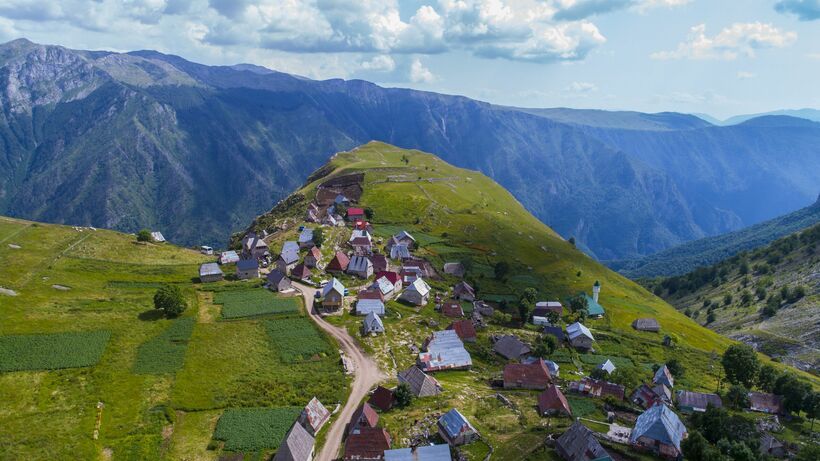
9. Sacred Sites: The Historic Mehmed Paša Sokolović Bridge in Višegrad
The Mehmed Paša Sokolović Bridge, also known as the Višegrad Bridge, is a historic and culturally significant site located in the town of Višegrad, Bosnia and Herzegovina. Constructed during the 16th century, the bridge stands as a testament to the architectural and engineering prowess of the Ottoman Empire during its peak.
Commissioned by Grand Vizier Mehmed Paša Sokolović, who hailed from the region, the bridge was completed in 1577 and served as a vital crossing point over the Drina River, linking the eastern and western parts of the Ottoman Empire. The bridge’s construction was overseen by the renowned Ottoman architect Sinan, whose expertise is evident in the bridge’s unique and elegant design.
The Mehmed Paša Sokolović Bridge is a prime example of Ottoman architecture and engineering, showcasing a remarkable combination of stone arches and angular towers. It stretches approximately 180 meters (590 feet) across the Drina River and stands at an impressive 15 meters (49 feet) high. The bridge consists of 11 arches designed to withstand the river’s strong currents and the test of time.
Beyond its functional significance, the Višegrad Bridge holds immense cultural and historical importance. It has been designated as a UNESCO World Heritage Site since 2007, recognizing its contribution to the region’s cultural heritage and its symbolization of intercultural exchange.
The Bosnian novelist and Nobel laureate Ivo Andrić further immortalized the bridge’s cultural significance in his renowned novel “The Bridge on the Drina.” Through his literary work, Andrić skillfully depicted the bridge’s role as a silent witness to the ebb and flow of history and the intermingling of diverse cultures in the Balkans.
Tragically, during the Bosnian War in the 1990s, the Mehmed Paša Sokolović Bridge suffered severe damage. However, in the post-war era, the bridge underwent extensive restoration efforts to preserve its historical and architectural heritage. Today, visitors can witness the restored beauty of this cultural gem and explore the surrounding historic town of Višegrad.
The Mehmed Paša Sokolović Bridge in Višegrad stands as a living monument to the ingenuity of its builders, a symbol of cultural heritage, and a poignant reminder of the turbulent history of the Balkans. Its enduring presence continues to draw both locals and tourists alike, serving as a bridge across the Drina River and across time and cultures.
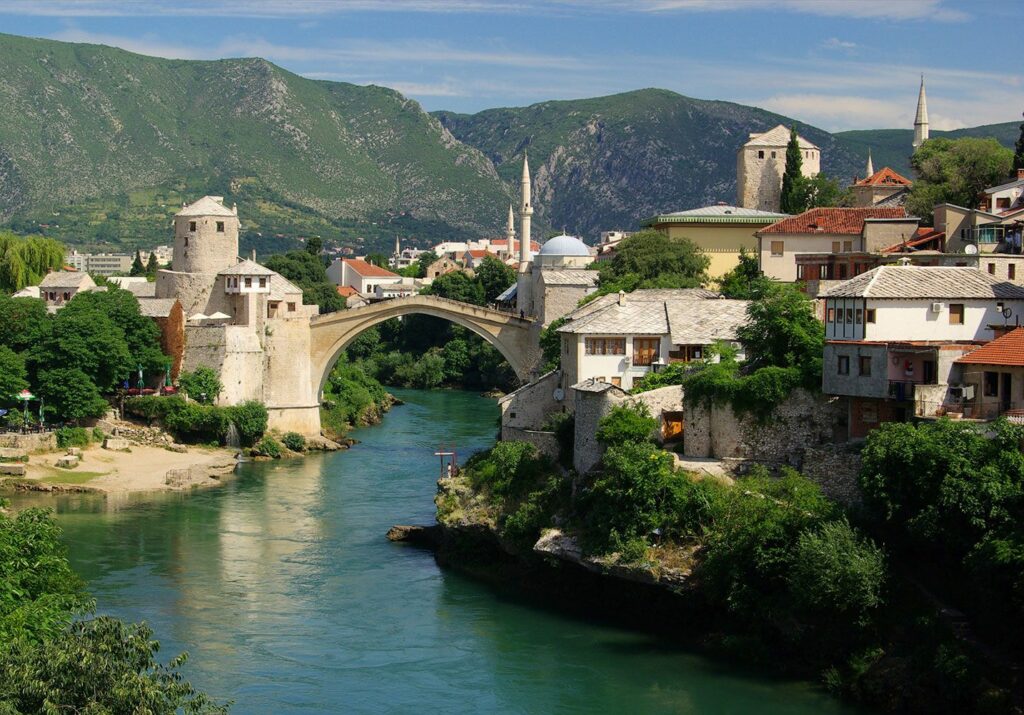
10. Hospitality and Warmth: Embracing Bosnian Culture
Finally, immerse yourself in the warmth and hospitality of the Bosnian people. Experience their genuine kindness, engage in lively conversations, and embrace the rich cultural heritage that forms the backbone of this fascinating country.
Conclusion:
Bosnia and Herzegovina, with its rich history, natural wonders, and welcoming locals, offers an enchanting blend of cultural exploration and breathtaking landscapes. From the bustling streets of Sarajevo to the tranquil valleys and majestic mountains, this country invites travelers to embark on a journey of discovery. By delving into its heritage, uncovering hidden gems, and indulging in its diverse cuisine, you’ll create memories that will last a lifetime. Plan your visit to Bosnia and Herzegovina, and prepare to be captivated by its multifaceted beauty.
FAQ
Q: Where is Bosnia and Herzegovina located?
A: Bosnia and Herzegovina is located in Southeastern Europe on the Balkan Peninsula. It shares borders with Croatia to the north, West, and south, Serbia to the East, and Montenegro to the southeast. It also has a small coastline along the Adriatic Sea.
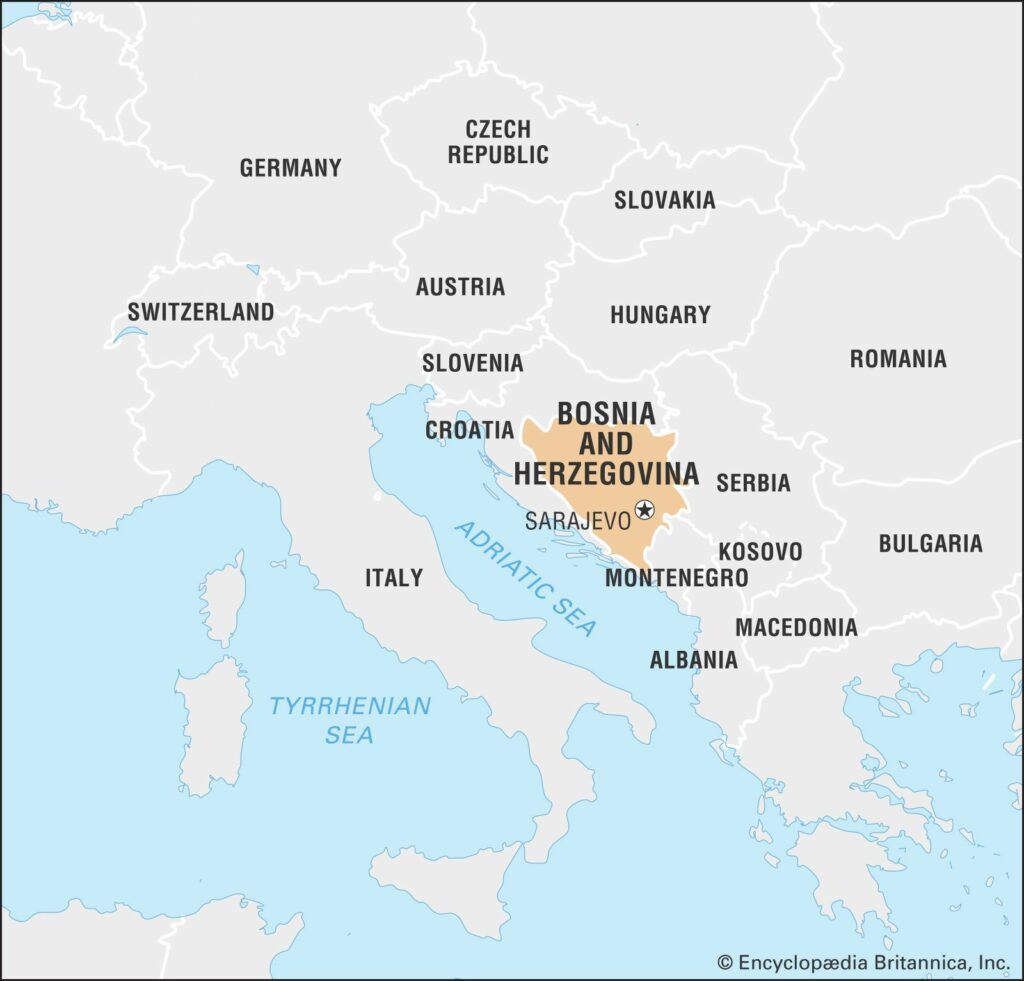
Q: What is the capital city of Bosnia and Herzegovina?
A: The capital city of Bosnia and Herzegovina is Sarajevo. It is also the largest city in the country and holds significant historical and cultural importance.
Q: What languages are spoken in Bosnia and Herzegovina?
A: The official languages of Bosnia and Herzegovina are Bosnian, Croatian, and Serbian. These languages are mutually intelligible and collectively called the “Bosnian-Croatian-Serbian” language.
Q: What is the currency used in Bosnia and Herzegovina?
A: The official currency of Bosnia and Herzegovina is the Convertible Mark (BAM). It is abbreviated as BAM and is pegged to the euro.
Q: Is Bosnia and Herzegovina a safe country to visit?
A: Bosnia and Herzegovina is generally considered a safe country to visit. However, like any destination, it is always advisable to exercise caution and follow common-sense safety measures. It is recommended to stay updated on the current travel advisories and respect local customs and laws.
Q: What are some famous tourist attractions in Bosnia and Herzegovina?
A: Bosnia and Herzegovina offers a diverse range of tourist attractions. Some popular ones include the historic city of Mostar with its iconic Stari Most Bridge, the capital city of Sarajevo, known for its rich history and cultural heritage, the stunning natural beauty of Plitvice Lakes National Park and Una National Park, and the historic Mehmed Paša Sokolović Bridge in Višegrad, among others.
Q: Can you visit Bosnia and Herzegovina’s coastline?
A: Bosnia and Herzegovina has a small coastline along the Adriatic Sea. The town of Neum, located in the southern part of the country, is the only coastal town in Bosnia and Herzegovina and offers beachside resorts and access to the beautiful Adriatic Sea.
Q: What is the climate like in Bosnia and Herzegovina?
A: Bosnia and Herzegovina has a diverse climate. The northern regions have a continental climate with cold winters and hot summers, while the southern areas have a more Mediterranean climate with mild winters and hot summers. The higher mountainous regions experience cooler temperatures and more significant snowfall.
Q: Is Bosnia and Herzegovina part of the European Union?
A: No, as of my knowledge cutoff in September 2021, Bosnia and Herzegovina is not a member of the European Union. However, it has been recognized as a potential candidate for EU membership and has been taking steps towards integration.
Q: What is the traditional cuisine of Bosnia and Herzegovina?
A: The traditional cuisine of Bosnia and Herzegovina is rich and diverse, influenced by Ottoman, Austro-Hungarian, and Mediterranean culinary traditions. Some popular dishes include cevapi (grilled minced meat), burek (flaky pastry filled with meat, cheese, or spinach), dolma (stuffed vegetables), and various types of pies.
